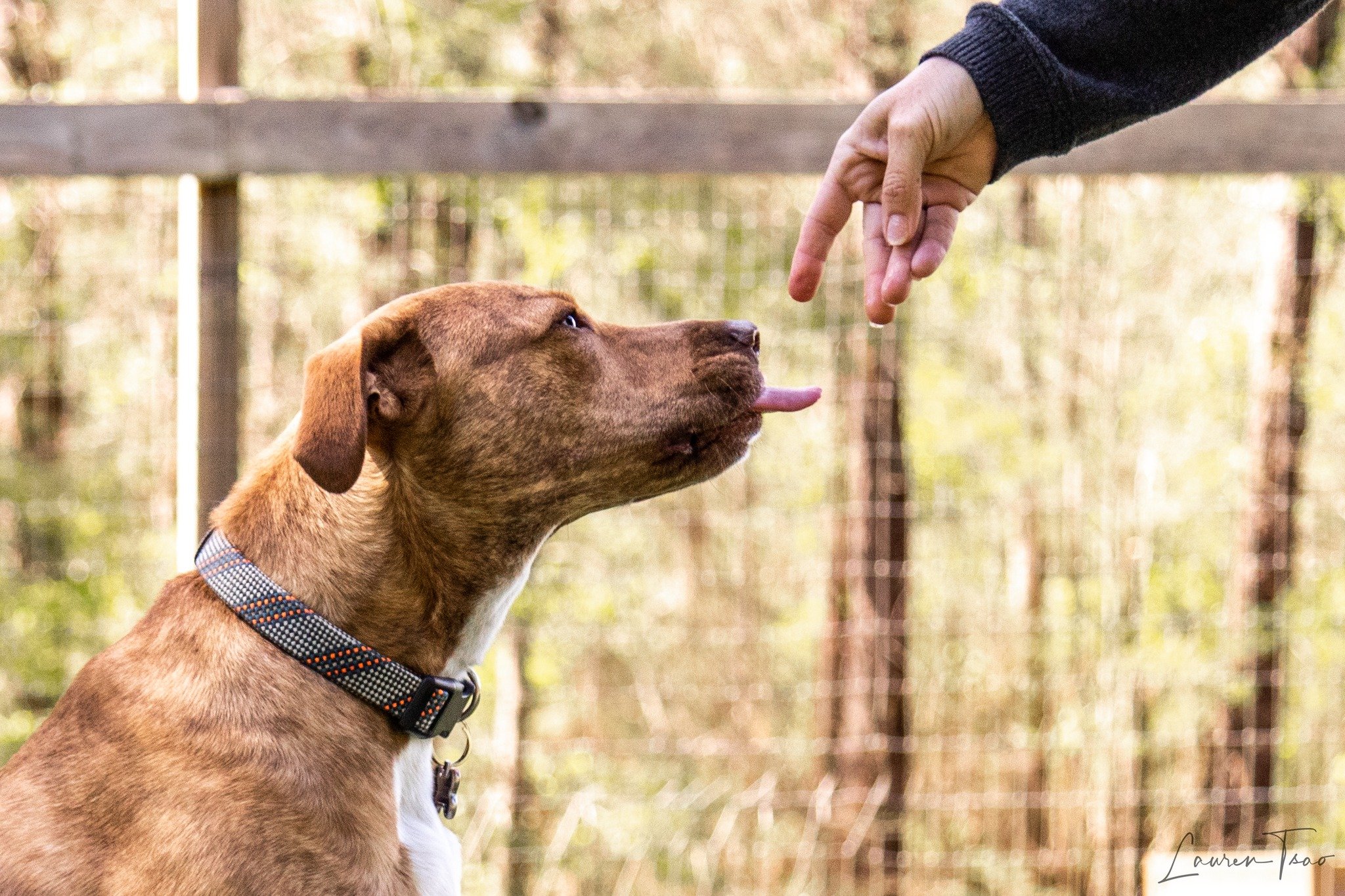
Dog Training & Behavior Tips

Kind to Dogs, Cold to People? The Myth of Positive Reinforcement and Human Empathy
What if using positive reinforcement with dogs doesn’t automatically make us kind to people? Being skilled in behavior science isn’t the same as being compassionate. Empathy with clients matters just as much as mechanics with dogs and truly humane training must include both. Whether you’re a trainer or a dog guardian, this is a must-read reminder that kindness isn’t a technique, it’s a choice.

“I Don’t Have Time”: When Life Feels Too Full for Dog Training
“I don’t have time” is one of the most heartbreaking things a behavior consultant can hear. Making time before things fall apart is one of the kindest things you can do for your dog and yourself. Behavior struggles are more than just inconvenience. They’re quality of life concerns. And small, doable changes really can make a big difference.

Not Just a Trick: Turning Chin Rests into a Vet-Ready Superpower
Think your dog’s chin rest is solid until the vet walks in?
Discover how the Three D’s of dog training: duration, distance, and distraction, can transform a cute behavior into a powerful tool for vet visits, grooming, and daily care. With real-life examples and step-by-step guidance, this post will help you build a chin rest your dog can confidently rely on in the real world.

“Is It Just Me, or Is It Really Slow Right Now?” - Why Dog Training Businesses Are Closing
Dog training businesses are facing a quiet but widespread slowdown in 2025. Many trainers are reporting fewer inquiries, increased client hesitation, and growing burnout. Not because demand for help has vanished, but because financial strain, advertising changes, and shifting consumer habits are reshaping how people access services…

No Drama: How to Give Your Dog Ear Drops Without a Fight
Giving ear drops doesn’t have to be a daily struggle. We’ll explore why dogs often resist ear care and offer compassionate, practical strategies to make the process easier. From warming the solution and using syringes to applying drops via cotton balls, small changes can dramatically improve your dog’s comfort.

"My Reactive Dog Is Ruining My Life”: An Open Letter
When life with a reactive dog feels overwhelming, it’s easy to believe you’re doing something wrong or that your dog is too far gone to help. This open letter speaks directly to the emotional weight of that experience: the grief, the guilt, the exhaustion, and the deep love that keeps you trying anyway.

Why Your Dog is Still Pulling on Leash
Many dogs struggle with loose leash walking, even after consistent training, the right tools, and professional help. We’ll look at why some dogs continue to pull despite doing everything “right,” and what might really be going on when progress stalls. We’ll review subtle signs that something deeper could be affecting your dog’s ability to walk comfortably, and offers a different way to move forward when training alone isn’t enough.

You Hired a Professional Dog Trainer. Now Let Them Do Their Job!
When you hire a dog trainer or behavior consultant, you’re not just paying for their time, you’re investing in their expertise, methods, and carefully developed process. Yet, many students unknowingly undermine this process by asking their trainer to work outside their area of expertise, change their methods, or skip important steps.
This blog post explores why it’s essential to trust your trainer’s approach, whether it’s using positive reinforcement instead of training collars or following a structured behavior assessment.

"He Seems Fine to Me!" Why Active Dogs Can Still Have Medical Issues
Does your dog’s energy and playfulness mean they’re perfectly healthy? Not always. Dogs are masters at masking discomfort, often staying active, even increasing their activity, to distract themselves from pain. This post explores why your dog’s boundless energy might not tell the full story, the subtle signs of underlying issues you might be missing, and why addressing their health first is key to effective training.

Beretta’s Story: The Dog Who Changed Everything
This blog post tells the story of Beretta, a rescue dog whose challenging behaviors initially appeared to be rooted in severe anxiety and fear. Over time, it became clear that her struggles went deeper, as her reactions to the environment and difficulty with training hinted at an underlying issue. After years of managing her behavior through training, medication, and environmental changes, a veterinary specialist confirmed that Beretta was…

Your Dog Deserves the Best: Choosing the Right Vet and Knowing When to Switch
In this blog, we discuss the importance of selecting the right veterinarian and knowing when to seek a second opinion to ensure your dog's health and well-being. I share the story of Oakley, my dog diagnosed with discospondylitis after persistent advocacy and seeking a second opinion, highlighting the value of trusting your instincts as a dog owner. I offer practical steps for choosing a vet, including assessing their communication style, expertise, and ability to address your dog’s unique needs.

Understanding the Prevalence of Behavior Problems in Dogs – Insights from the Dog Aging Project
The Dog Aging Project (DAP) provides groundbreaking insights into the prevalence and scope of behavioral challenges in dogs. Analyzing data from over 43,000 dogs, this study found that nearly all dogs (99.12%) exhibit moderate-to-serious behavioral issues, ranging from aggression and anxiety to separation-related behaviors and housesoiling. The blog post emphasizes the importance of early recognition and intervention to address these issues. Behavioral problems often reflect deeper emotional, physical, or environmental concerns, requiring a “big picture” approach. Through tools like behavioral assessments, tailored training plans, and collaboration with veterinarians, owners can address their dog’s needs effectively.

Behavioral Challenges in Brachycephalic Dogs: A Hidden Complexity
Brachycephalic breeds, such as French Bulldogs and Pugs, are becoming increasingly popular, with the French Bulldog recently named the most popular dog breed in the U.S. While their charming, expressive faces appeal to many, these flat-faced breeds often face unique behavioral and medical challenges rooted in their anatomy.

Behavioral Quirks or Signs of Stress? A Look Into Blanket and Flank Sucking in Dogs
The blog post explores the intriguing behavior of blanket and flank sucking in dogs, particularly in Doberman Pinschers. It explains that this behavior is often a self-soothing mechanism rooted in comfort-seeking. Studies on flank sucking in Dobermans show it may have a hereditary component and parallels certain compulsive disorders in humans. Drawing from research, the post highlights how genetic predispositions, early weaning, and stress can contribute to this behavior.

Unpacking Dog Aggression Towards People: Insights from Behavior Consultations
This blog post delves into the complexities of aggression in dogs, highlighting how stress, fear, and anxiety often underlie this behavior. Drawing on recent research, it emphasizes the importance of recognizing early stress indicators like yawning, trembling, and excessive attention-seeking as precursors to aggressive responses. The blog discusses the detrimental impact of punitive measures, which can exacerbate anxiety and escalate aggression, and instead advocates for trust-based, positive reinforcement methods.

Understanding Behavioral Challenges in Dogs with Idiopathic Epilepsy
This blog post explores how idiopathic epilepsy (IE) in dogs affects not only their physical health through seizures but also their behavior and emotional well-being. A recent study highlights that dogs with IE often exhibit heightened excitability, attention-seeking behaviors, and cognitive impairments, which can be influenced by the neurological condition and its treatments.

Dog Pain and Behavior: How to Identify the Signs and Take Action
This blog post explores a recent study published in the Journal of Veterinary Behavior, which examined how well dog owners can identify pain-related behaviors in their pets. The study revealed that many owners struggle to recognize subtle signs of discomfort, particularly in older dogs where behaviors may be mistaken for normal aging.

Not All Dog Trainers Are Created Equal: What You Need to Know Before Hiring One
This blog post highlights the importance of carefully selecting a dog trainer or behavior consultant due to the unregulated nature of the industry. Anyone can claim to be a dog trainer without any formal education, making it essential for dog owners to evaluate credentials, experience, and methodologies when seeking professional help.

Why is My Dog Aggressive Towards Other Dogs?
Aggression towards other dogs is often a complex behavior influenced by a variety of factors, including fear, frustration, physical discomfort, and environmental triggers. This blog post delves into the common causes of aggression and how to recognize early warning signs.

Classical Conditioning and Your Dog: Understanding How It Shapes Behavior
This blog post explores the concept of classical conditioning and how it influences dog behavior. Classical conditioning, first studied by Ivan Pavlov, explains how dogs (and all animals) can learn to associate neutral stimuli, like sounds or objects, with meaningful outcomes, such as rewards or discomfort…
